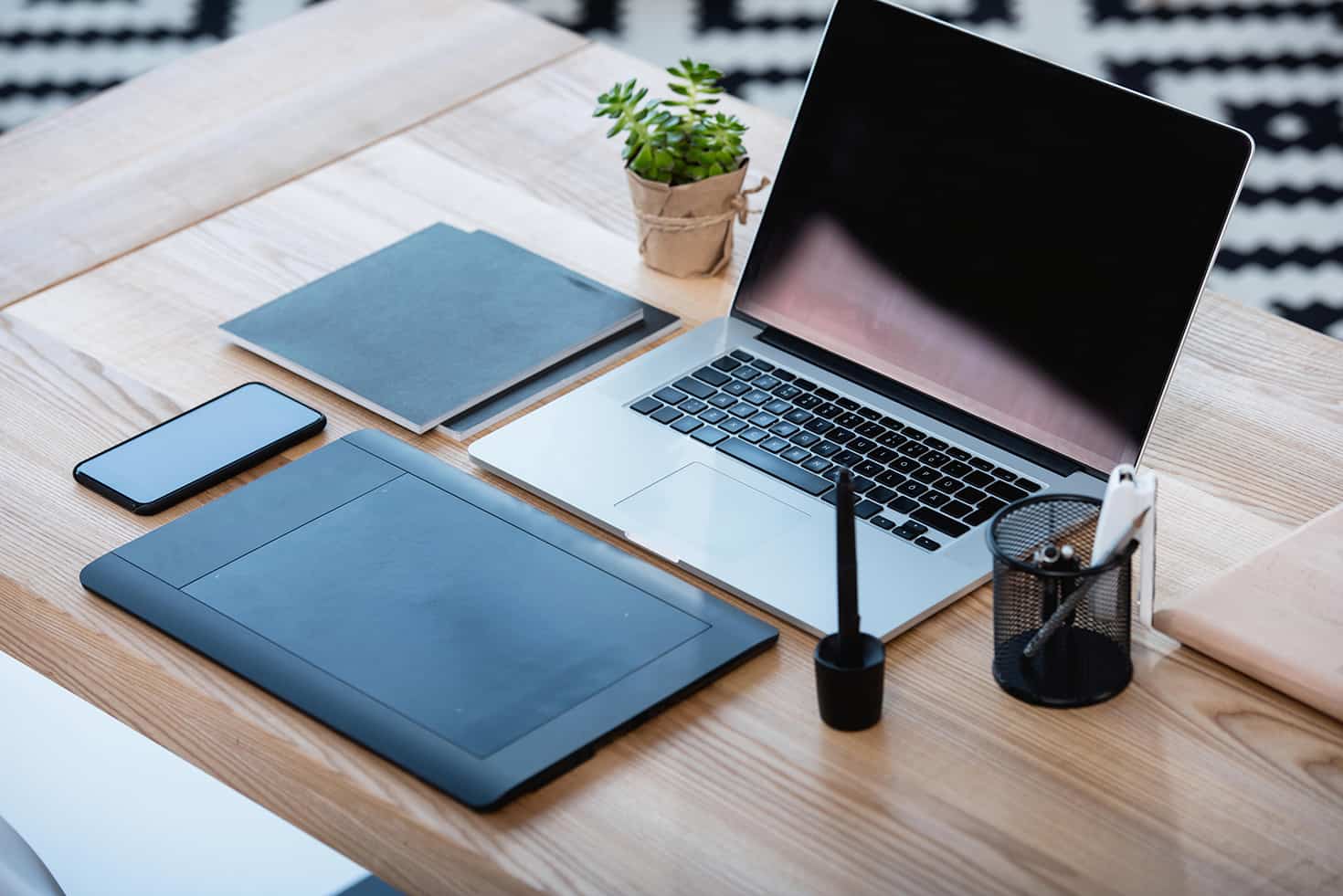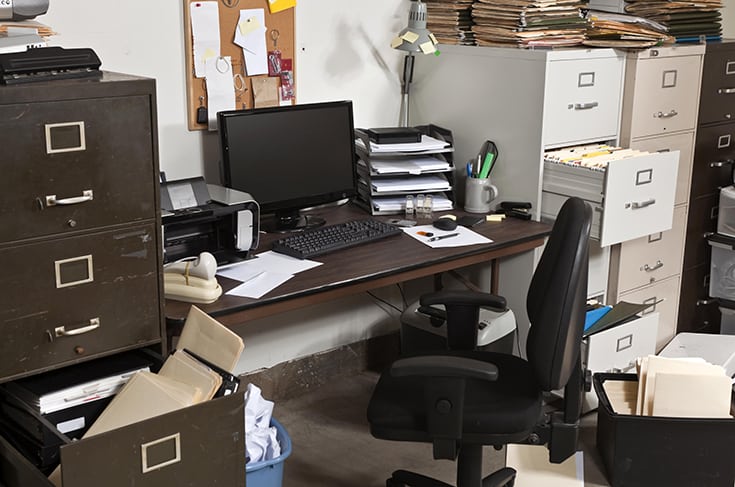
In the common imagination, an untidy desk is first of all synonymous with clutter and disorganization in one's mind: certainly ensuring efficiency and cleanliness in our workspace will influence our professional performance, maximizing productivity and the quality of our work. Moreover, an tidy workspace will allow us to immediately find the objects and accessories we need, without wasting precious time. Having said that, we can certainly conclude, when it comes to the cleanliness and tidiness of our worktop, that keeping a clean and tidy desk will make us work much more efficiently: it will therefore be appropriate to devote some of our free time to cleaning and tidying up our space and worktop with discipline.
The correct organisation of your chair and desk cannot therefore disregard the cleanliness and order of its surface, shelves and drawers. Another very important aspect, in order to make the most of the space available on the worktop, will be to position objects, accessories and work tools in a correct and functional way. Once you have established how to set up and organise your desk, you can proceed to arrange the objects in such a way as to optimise productivity and above all to combat chaos.

Where to put the desk?
Let's come to the subject of desk placement within the office space: what is the best placement of the desk in the office?
When we find ourselves having to furnish an empty room, regardless of whether it represents a room in our home or our work office, we will always have some doubts: the point is to work in such a way as to organise a functional and practical work environment; in this regard, the positioning of the desk is a very important operation. On the work surface or on the desk, many workers spend many hours and do most of their work and professional activities. When positioning the desk, we will certainly have to consider the fact that each environment will be characterized by a different configuration of the available spaces: in some offices we will not have a great possibility to configure and position the furniture.
Today we are going to give you some general advice in order to make the best possible choice of desk positioning within the office space, in order to optimise the space you have available and create a harmonious and comfortable environment.

Do not look at the wall
The best interior designers specialising in office and workspace furnishings, always advise against placing the desk against the wall. In this regard, the basic concept is that it is preferable not to be seated in front of a wall: in this case the feeling of being closed and restricted would certainly be fuelled, which is why this option should be absolutely avoided in order to guarantee the comfort of the worker. However, if you cannot avoid placing one or more desks near the office walls, our advice is to brighten up the walls, giving a touch of colour or with the help of installations, prints or paintings; alternatively you can decide to place shelves or shelves with design objects on the walls next to the desk.
A very important factor that you will have to consider is the fact that some jobs or professions, will require a high level of concentration in the execution of the professional practice: therefore our advice for those who will find themselves in this category of professions, will be instead to consider the positioning of the desk in front of the wall, so as to avoid distractions and be able to concentrate in the best way: moving slightly in the middle of the room will certainly help to decrease the feeling of claustrophobia, leaving an empty space between the desk and the wall.
Never turn your back to the door
Another very important factor, always considered significant by interior decorators and designers, will be to sit at your desk, without ever turning your back on the office door; in the same way, you will not have to turn your back on the corridor, or other openings.
If a passage, with its opening, is located behind the worker's chair, this will lead to the inevitable distractions of the worker when someone enters through the door or through a passageway inside the office room. Having said this, the desk should be positioned perpendicular to doors and openings; in particular, it should face openings, doors and windows, only the sides of the desk. In this way the person sitting at the desk will be able to control the movements and movements that take place inside the spaces, avoiding distractions caused by them. If you operate in a context where you are professionally having to receive a large number of people every day, our advice is to place the desk facing the entrance to the room or work environment. In this way, people who will frequently enter your work environment (provided they are polite) will immediately have their eyes turned towards you, so that they can understand if you are busy or if it is possible to disturb you.
A perfect solution for this is the positioning of the chair and desk, towards the front door of the working environment, but not exactly in front of it. In any case, for the correct positioning of the desk inside an office, it will be good to identify a point in the room that is well lit and characterised by the presence of natural light. In this regard, it will be very important to consider the exposure of a room to light in order to assess the correct positioning of a desk; by making an accurate assessment, you will avoid light reflections affecting your computer screen, disturbing its visibility. If you finally decide to buy an L-shaped desk, our last advice is not to put both sides of the furniture on the wall, in order to avoid sitting in front of the wall.
Consulting our catalogue, you can choose among a wide range of desks that make up our proposal; for example, you can choose the classroom desk Tana 1, the Bann A 10 or the Bann C table; and also the Kolva table (A 10 or C), the Tibisco table in its various models, and many other products.



